Fast Facts
- When: 12th to 15th September 2024
- Where: Doncaster Racecourse
- Watch: Most races live on ITV
- Official Website: St Leger Festival
The St Leger festival usually takes place over four days at Doncaster Racecourse, with the star event being the Group 1 St Leger Stakes, run on the Saturday.
Previously run between Thursday and Saturday, the meeting now begins on Thursday and concludes on the Sunday.
The St Leger is one of the biggest horse races in Great Britain. The race has been about since 1776, making it the oldest of the five classics, and is widely regarded as the one of the premier events on the flat racing calendar.
Some huge races are run during the course of the festival and with the final classic of the year it is widely regarded as the start of the closing chapter of the flat racing season.
Existing Customer Free Bets & Money Back Offers
Note: Offers will appear here nearer the event as and when they become available.
Stats Articles
- Which Horses Have Won the Triple Crown of Flat Racing in the UK?
- Horses That Have Won Multiple British Classics: Has any Horse Ever Won All Five?
Event Stats
St Leger Stakes Winners – 2000 to 2023
| Year | Horse | Jockey | Trainer | Odds | Rating | Distance |
|---|---|---|---|---|---|---|
| 2023 | Continuous (JPN) | R Moore | A P O’Brien | 3/1 | 115 | 2 3/4 L |
| 2022 | Eldar Eldarov (GB) | D Egan | R Varian | 9/2 | 109 | 1/2 L |
| 2021 | Hurricane Lane (IRE) | W Buick | C Appleby | 8/11 F | 120 | 2 3/4 L |
| 2020 | Galileo Chrome (IRE) | T Marquand | JP O’Brien | 4/1 | 110 | Neck |
| 2019 | Logician (GB) | F Dettori | J Gosden | 5/6 F | 115 | 2 1/4 L |
| 2018 | Kew Gardens (IRE) | R Moore | A P O’Brien | 3/1 | 116 | 2 1/4 L |
| 2017 | Capri (IRE) | R Moore | A P O’Brien | 3/1 F | 120 | 1/2 L |
| 2016 | Harbour Law (GB) | G Baker | L Mongan | 22/1 | 102 | 3/4 L |
| 2015 | Simple Verse (IRE) | A Atzini | R Beckett | 8/1 | 108 | Head |
| 2014 | Kingston Hill (GB) | A Atzini | R Varian | 9/4 F | 120 | 1 1/4 L |
| 2013 | Leading Light (IRE) | J O’Brien | A P O’Brien | 7/2 F | 110 | 1 1/4 L |
| 2012 | Encke (USA) | M Barzalona | M Al Zarooni | 25/1 | 112 | 3/4 L |
| 2011 | Masked Marvel (GB) | W Buick | J Gosden | 15/2 | 109 | 3 L |
| 2010 | Arctic Cosmos (USA) | W Buick | J Gosden | 12/1 | 111 | 1 3/4 L |
| 2009 | Mastery (GB) | T Durcan | S bin Suroor | 14/1 | 111 | 3/4 L |
| 2008 | Conduit (IRE) | F Dettori | M Stoute | 8/1 | 112 | 3 L |
| 2007 | Lucarno (USA) | J Fortune | J Gosden | 7/2 | 113 | 1 L |
| 2006 | Sixties Icon (GB) | F Dettori | J Noseda | 11/8 F | 115 | 2 1/2 L |
| 2005 | Scorpion (IRE) | F Dettori | A P O’Brien | 10/11 F | – | 1 L |
| 2004 | Rule Of Law (USA) | K McEvoy | S bin Suroor | 3/1 JF | 120 | Head |
| 2003 | Brian Boru (GB) | J Spencer | A P O’Brien | 5/4 F | – | 1 1/4 L |
| 2002 | Bollin Eric (GB) | K Darley | T Easterby | 7/1 | 111 | 1 1/4 L |
| 2001 | Milan (GB) | M Kinane | A P O’Brien | 13/8 F | – | 5 L |
| 2000 | Millenary (GB) | T Quinn | J Dunlop | 11/4 F | 114 | 3/4 L |
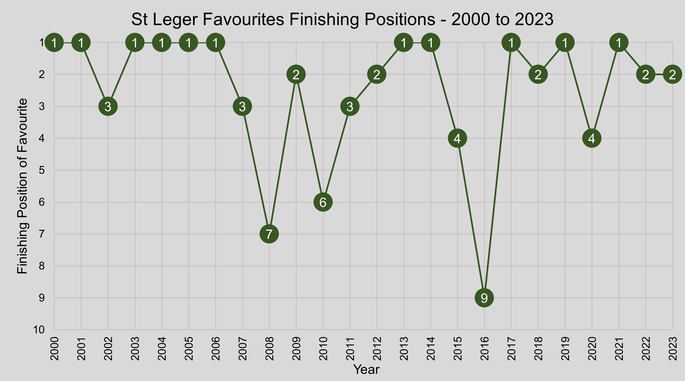
St Leger Festival 2023 – Most Successful Trainers
| Trainer | Wins | Places |
|---|---|---|
| Michael Appleby | 3 | 2 |
| Karl Burke | 3 | 0 |
| George Boughey | 2 | 1 |
| Andrew Balding | 1 | 5 |
| John & Thady Gosden | 1 | 5 |
| William Haggas | 1 | 4 |
| Richard Hannon | 1 | 3 |
| Clive Cox | 1 | 2 |
| Philip McBride | 1 | 2 |
| Ralph Beckett | 1 | 2 |
| Aidan O’Brien | 1 | 1 |
| Alan King | 1 | 1 |
| Ben Brookhouse | 1 | 1 |
| Kevin Ryan | 1 | 1 |
| Marco Botti | 1 | 1 |
| Roger Teal | 1 | 1 |
| Adrian Paul Keatley | 1 | 0 |
| Charles Hills | 1 | 0 |
| David & Nicola Barron | 1 | 0 |
| Ismail Mohammed | 1 | 0 |
| Kieran Cotter | 1 | 0 |
| Michael Bell | 1 | 0 |
| Michael Herrington | 1 | 0 |
| Paul & Oliver Cole | 1 | 0 |
| Tom Clover | 1 | 0 |
| Julie Camacho | 0 | 2 |
| Roger Fell & Sean Murray | 0 | 2 |
| Adrian Nicholls | 0 | 1 |
| Charlie Johnston | 0 | 1 |
| David Menuisier | 0 | 1 |
| Ed Dunlop | 0 | 1 |
| George Scott | 0 | 1 |
| Iain Jardine | 0 | 1 |
| Ian Williams | 0 | 1 |
| James Fanshawe | 0 | 1 |
| Jennie Candlish | 0 | 1 |
| John Wainwright | 0 | 1 |
| Michael Wigham | 0 | 1 |
| Owen Burrows | 0 | 1 |
| Richard Fahey | 0 | 1 |
| Sean Woods | 0 | 1 |
St Leger Festival 2023 – Most Successful Jockeys
| Jockey | Wins | Places |
|---|---|---|
| Tom Marquand | 4 | 6 |
| Rossa Ryan | 3 | 2 |
| Oisin Murphy | 2 | 6 |
| Ryan Moore | 2 | 4 |
| William Buick | 2 | 4 |
| Kieran Shoemark | 2 | 1 |
| Clifford Lee | 2 | 0 |
| Adam Farragher | 1 | 2 |
| Sean Levey | 1 | 1 |
| Stafano Cherchi | 1 | 1 |
| Ben Curtis | 1 | 0 |
| Connor Beasley | 1 | 0 |
| Connor Planas | 1 | 0 |
| Daniel Tudhope | 1 | 0 |
| Hollie Doyle | 1 | 0 |
| Lewis Edmunds | 1 | 0 |
| Mark Winn | 1 | 0 |
| Sam James | 1 | 0 |
| Tom Eaves | 1 | 0 |
| Tom Scudamore | 1 | 0 |
| Richard Kingscote | 0 | 4 |
| Jim Crowley | 0 | 2 |
| P J McDonald | 0 | 2 |
| Robert Havlin | 0 | 2 |
| Alastair Rawlinson | 0 | 1 |
| Alec Voikhansky | 0 | 1 |
| Darragh Keenan | 0 | 1 |
| Frankie Dettori | 0 | 1 |
| George Rooke | 0 | 1 |
| Hector Crouch | 0 | 1 |
| Joe Fanning | 0 | 1 |
| Jonny Peate | 0 | 1 |
| Mia Nicholls | 0 | 1 |
| Paul Hanagan | 0 | 1 |
| Robbie Power | 0 | 1 |
| Saffie Osborne | 0 | 1 |
| William Pyle | 0 | 1 |
About The St Leger Festival
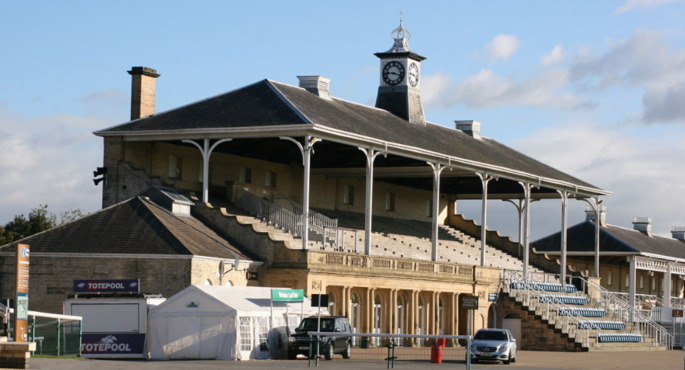
The event takes place at Doncaster Racecourse and is seen as one of the biggest horse racing meetings in the north. Since its was inaugurated in 1776, the race has always been held within Doncaster, but has been moved from a number of different venues, before residing at Doncaster Racecourse.
The location was chosen due to the fact that it was devised by Anthony St Leger who was an army officer that resided near Doncaster. Races throughout the event used be over two miles, which is fairly long in flat racing standards, but in 1800 the course was cut to one mile six furlongs, which is where it still stands today.
St Leger History
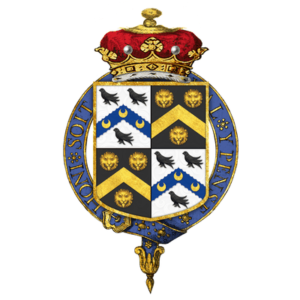
By Rs-nourse, Wikimedia Commons
When looking at the St Leger it is important to draw a distinction between the Festival of racing that takes place every September and the Classic race that first took place in 1776. The problem with talking of them separately is that it’s virtually impossible to separate the two, given that races such as the Doncaster Cup existed for ten years before the St Leger Stakes first took place and is often run during the same week as the Classic. Suffice to say, the event has grown in both stature and popularity in the modern era. Even so, there’s no question that the St Leger is the most important race of the week, so that is the race that we’ll tell you about here.
Given that the race has gone on to become one of the most prestigious flat races in the British racing calendar, it’s interesting that it didn’t have a name when it was run for the first time back in 1776. The contest was the idea of Anthony St Leger who was a politician and army officer who lived in the Doncaster area. It took place over two miles and initially referred to as a ‘sweepstake of 25 Guineas’. Colts and geldings had to carry eight stone whilst fillies received an allowance of two pounds. Interestingly, just as the race was unnamed, so was its first winner. It took place on Cantley Common on the twenty-fourth of September and the winner was owned by the 2nd Marquess of Rockingham.
The Race’s Development
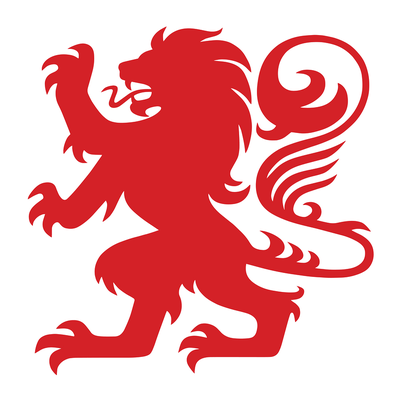
After the running of the race, a meeting took place at the Red Lion Inn in Doncaster’s Market Place in order to discuss what they would do about it the following year. That’s when it was given the name of the St Leger Stakes, despite a suggestion that naming it the Rockingham Stakes after the owner of its first winner. Though it was moved to its current location in 1778, that was only a temporary assignment and it moved around the country for a time. During the First World War, for example, it was moved to Newmarket and given the title of the September Stakes. No race was run in 1939 after the Second World War broke out, but it did run during the rest of the war in a number of different locations.
The race’s venue was settled as Doncaster Racecourse after the war, but it has still had a number of outings to other courses since then. In 1989 subsidence at the course stopped it from taking place at Doncaster and so it was moved to Ayr, then in 2006 redevelopment work at Doncaster Racecourse meant that it was run at nearby York instead. In terms of the race itself, it was closed to geldings in 1906, which happened just shy of one hundred years after the race’s length was cut down to one mile, six furlongs and one hundred and ninety-three yards. Though the race has always been popular, the Derby-St Leger double achieved by Champion in 1800 and the first Triple Crown success of West Australian in 1853 thrust it into the spotlight.
The Modern Day Race
Though the length of the race has remained roughly the same since 1813, the event that takes place today would be almost unrecognisable to Anthony St Leger. Nowadays it is run over one mile, six furlongs and one hundred and fifteen yards and is eligible to three-year-old fillies and thoroughbred colts. It is the oldest of the five Classics, making it one of the most prestigious events in all of British flat racing.
Versions of the St Leger Around the World
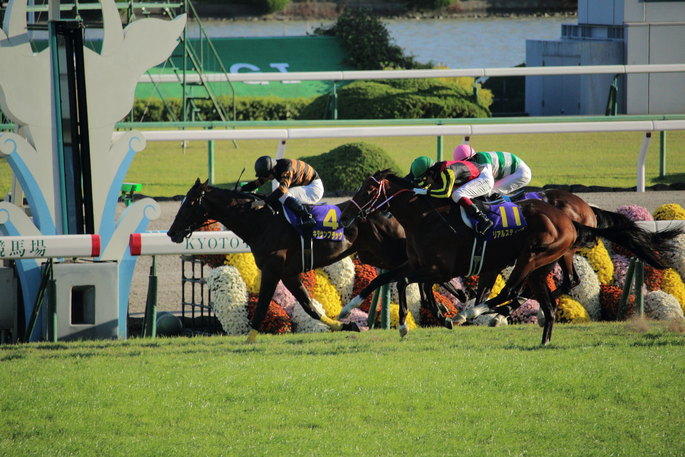
As with all popular British races, the St Leger has inspired a number of similar races around the globe. The most obvious examples include the Irish St Leger, the Prix Royal-Oak in France, the St Leger Italiano and the New Zealand St Leger. There’s also Japan’s Kikuka-shō and Australia’s VRC St Leger.
It is the final leg of the Triple Crown, coming after the 2,000 Guineas and the Derby. It is not as common for horses to even attempt the Triple Crown any more, with Camelot in 2012 being the closest to achieve it after winning the 2,000 Guineas and the Derby only to finish second in the St Leger.
Doncaster Racecourse
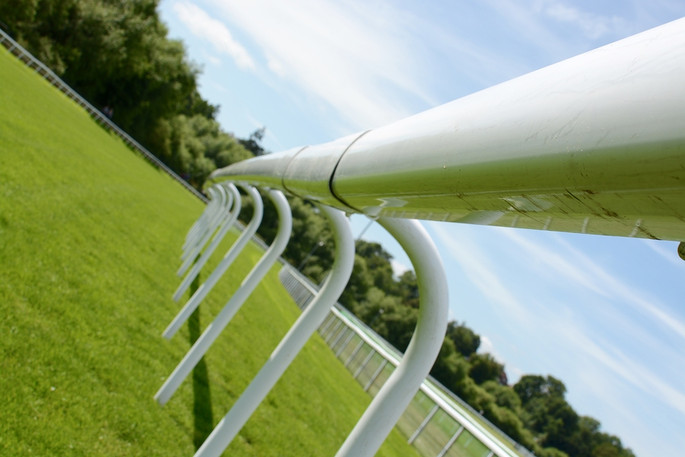
At this point it’s probably worth giving a quick explanation of the history of Doncaster Racecourse. Though not as famous as the likes of Aintree, Cheltenham or Epsom, Doncaster is actually the oldest racecourse in Britain. There are records of races taking place as early as the sixteenth century, with a map of a course already in existence at Town Moor being dated to 1595. In the early history of racing the sport tended to attract less reputable types, leading to the corporation of Doncaster attempting to stop them from happening in 1600. Despite their efforts, it failed to stop the racing taking place and by 1614 they simply gave up and actively encouraged it, marking out a racecourse.
As well as being the home of the St Leger Stakes, Doncaster Racecourse is also where the appropriately named Doncaster Cup takes place. As mentioned earlier, this race was actually founded a decade earlier than the more prestigious St Leger Stakes, first run in 1766 on the same Cantley Common that the Stakes would later be run on. It forms part of the Stayers’ Triple Crown alongside the Goodwood Cup and the Ascot Gold Cup. As for the racecourse, it moved from Cantley Common to its current location twelve years after the first running of the Doncaster Cup. It’s a left-handed course that runs on a pear-shaped tracked that is mostly flat. The racecourse also boasts a National Hunt racing track, though it’s unquestionably best known for its flat racing track.
Festival Format
The Festival runs every Autumn, usually in the first couple of weeks of September. The meeting lasts for four days, currently running from Thursday through to Sunday having previously begun on the Wednesday. Leger Legends Day which used to open the meeting is now held on the final day. With each day comes a good range of races and horses from around the world, climaxing with the St Leger Stakes, the final of the five classics of British flat racing. Throughout each day is a mix of Group 1, 2, 3 and non-rated races. Here’s a look at the main races from each day:
Day One: Ladies Day
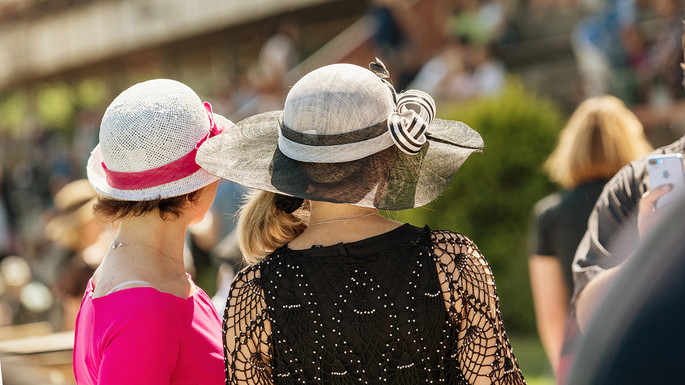
The opening day is Ladies Day and is one of the most popular days of the week at the meeting. There are two noteworthy races during the day, starting with the Group 2 Park Hill Stakes. First run in 1839, the race is for fillies and mares aged three and over. It lasts for one mile, six furlongs and one hundred and fifteen yards, meaning it’s the exact same length as the St Leger Stakes. Named in hour of an estate formerly owned by Another St Leger himself, the Park Hill Stakes was a Group 2 race when the grading was first introduced in 1971. It was relegated to Group 3 in 1991 then promoted back thirteen years later. No horse has won it more than once, but Frankie Dettori has won it seven times as a jockey, as have trainers John Scott and Noel Murless.
The second noteworthy race is the Group 3 Sceptre Stakes, which takes place over seven furlongs and six yards and is open to mares and fillies aged three and up. Named after a filly named Sceptre who won four Classics including the St Leger Stakes, the race was listed until it gained its Group 3 status in 2011. No horse has won it more than once, with Michael Hills being the most successful jockey thanks to his four wins. They all came on horses trained by Barry Hills, joining Asteroid Field as horses giving him is five wins as a trainer to make him the race’s most successful trainer.
Day Two: Doncaster Cup Day

Previously known as Gentleman’s Day, Friday is named Doncaster Cup Day, after the oldest race still run under the Rules of Racing which is the highlight of the day. Run over two miles, one furlong and one hundred and ninety-seven yards, the race is for three-year-olds and over with a three pound allowance given to fillies and mares. Beeswing is the race’s most successful horse with four wins, whilst Joe Mercer take the credit as the best jockey with double that number of victories under his belt. The most successful trainers are Cecil Boyd-Rochfort and Sir Henry Cecil with seven wins apiece.
Day Two is a day that features as much going on off the racecourse as on it, with a competition to find the best dressed male joined up with activities such as clay pigeon shooting. That doesn’t mean that there’s nothing worth watching on the turf, however. The May Hill Stakes was first run in 1976 and takes place over one mile. It’s for two-year-old fillies and is named after a horse that won numerous races including the 1975 Park Hill Stakes. It was a Group 3 race when it was established, moving up to Group 2 in 2003. Winners often go on to run in the Fillies’ Mile. Frankie Dettori has the honour of being the best jockeys with six wins, two ahead of Willie Carson on four, whilst Sir Henry Cecil is the unrivalled best trainer in the event thanks to his twelve wins.
The Flying Childers Stakes is the final race that deserves a mention, given that it’s another Group 2 offering. It’s for two-year-olds and lasts for five furlongs and is named after a racecourse from the eighteenth century that was trained at nearby Carr House. Established in 1967 and originally named the Norfolk Stakes, it was given its current name after another Norfolk Stakes began to be run at Ascot in 1973. Given that it’s only for horses aged two it’s not a major shock that no horse has won it more than once, but Frankie Dettori again has won it a record six times as a jockey, one more than Lester Piggott. Sir Michael Stoute is the leading trainer, managing five wins.
Day Three: St Leger Day
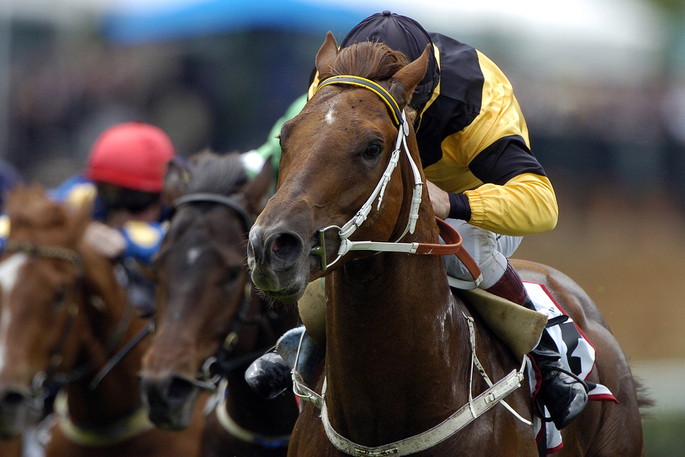
The Saturday is what the whole week builds up to, given that it’s named after the most prestigious race of the week – the Group 1 St Leger Stakes. The race is one of the biggest in the world, as mentioned, and the £743,000 prize fund in 2023 really does highlight this. Some notable winners include Leading Light, Milan, Scorpion and Toulon. Bill Scott has won it more than any other jockey, crossing the line first nine times. The race has a family feel to it when it comes to success, give that the leading trainer is John Scott, Bill’s brother. He picked up an impressive sixteen wins between 1827 and 1862.
Whilst the St Leger Stakes is the undoubted highlight of the week, it is not the only race worthy of a mention. The Champagne Stakes also takes place on the Saturday, with the Group 2 race for two-year-old colts and geldings being raced over seven furlongs and six yards. Established in 1823, the race was originally for all horses but was restricted to makes in 1988. That was twenty-six years after it took on its current length, having been raced over six furlongs since 1870. The Scott brothers also dominate this race, with Bill having picked up nine wins as a jockey and John managing ten victories as a trainer. He has to share that honour with Matthew Dawson, however, who also trained ten winners in the race.
Established in 1855 and known briefly as The Portland Plate, The Portland Handicap used to be run on a course with a left hand bend but nowadays takes place on a straight course. It lasts for five furlongs and one hundred and forty-three yards and is open to horses aged three and over. As the name suggests, this is a handicap race, though that didn’t stop Halmahera from winning back-to-back races in 2002, 2003 and 2004. The wonderfully named Brownie Carslake is the leading jockey with five wins, whilst Richard Marsh has the same number of wins as a trainer even though they were with entirely different horses.
The last race of the day that is worthy of a mention is the Group 2 Park Stakes. The flat race is run over seven furlongs and six yards and is for horses aged three and up. The race was first established in 1978 and was sponsored by Kiveton Park Steel, which is where it gets its name from. It was promoted to a Group 3 race in 1986 and then became a Group 2 offering in 2004. Three horses have won the race twice to date, namely Bishop of Cashel, Iffraaj and Arabian Gleam. Interestingly, all three horses won their races back-to-back. When it comes to the leading jockey it’s that man Frankie Dettori again with five wins, one more than Willie Carson with four. Sir Michael Stoute is the leading trainer thanks to his four wins with Dick Hern and James Fanshawe one behind with three each.
Day Four: Legends Day
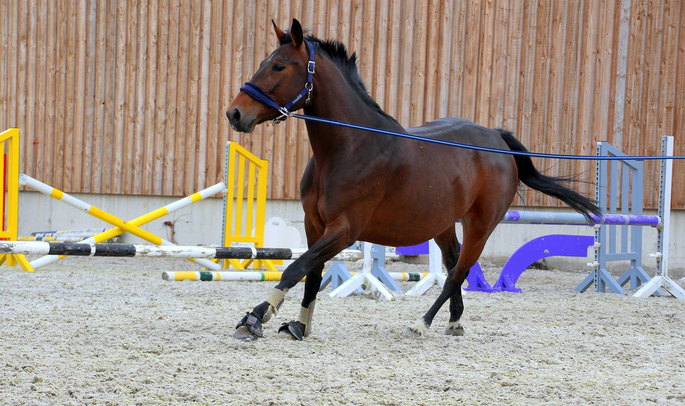
The final day of the Festival is known as Leger Legends Day and is generally a celebration of past winners from the meeting. Guests are invited by the racecourse to come down and parade before the crowds ahead of the day’s racing. The day features a charity race that features retired legendary jockeys getting back into the saddle once more, raising money for the Northern Racing College and a rehabilitation location for injured jockeys known as Jack Berry House.
The highlight of the day comes in the form of the Scarborough Stakes, which is actually a listed race but has include some prestigious winners over the years who have gone on to bigger and better things. This includes the likes of Sole Power as well as Humidor, the 2011 winner ridden by Frankie Dettori. Open to horses aged two and over, the race is run over five furlongs and three yards. Ryan Moore has won it more than any other jockey, running home victorious on five occasions, one more than Frankie Dettori on four.
Interesting Facts
Lester Piggott is the most successful jockey in the St Leger in modern times, with eight winners between 1960 and 1984. In recent years famous jockey Frankie Dettori has enjoyed great success with six winners, his first coming in 1995.
The most successful trainer at the meeting for the St Leger Stakes is John Scott who won no fewer than sixteen races from 1827 to 1862; a feat that hasn’t even nearly been matched by any of his rivals of past and present. Here are some other facts about the St Leger Stakes:
- The fastest winning time to date for the St Leger at Doncaster came in 2019 when Logician romped home in 3 minutes and 0.27 seconds
- Never Say Die won the race by twelve lengths in 1954, the widest winning margin so far
- In 1822 a horse named Theodore won the race at odds of 200/1, the longest odds of a winner by some distance
- If you were to have a winner then you’d rather you’d backed Theodore than Galtee More, with the latter being the shortest odds winner thanks to his 1/10 backing in 1897
- The most horses to take part in the race was 30 in 1825, whilst the fewest was just 3 in 1917
